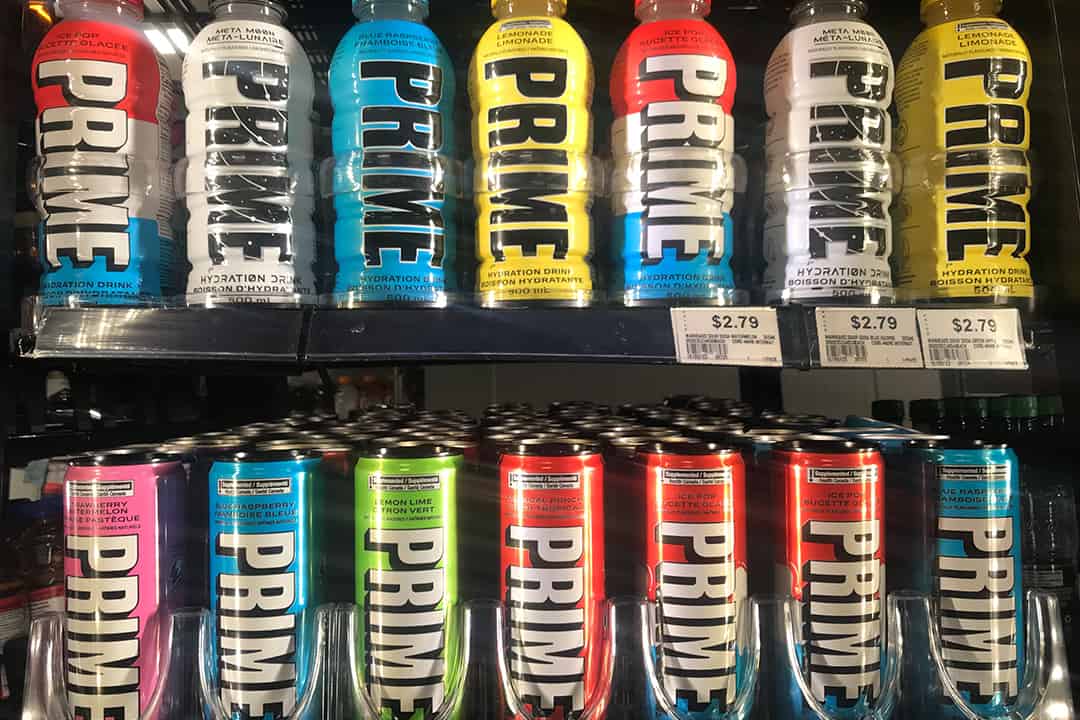As I stood in line at a grocery store, a kid who looked no older than twelve ran ahead of me to meet his mother. He held two bottles of Prime hydration drinks and begged his mother to buy the drinks. His mother shook her head repeatedly — presumably not seeing the value of a colourful, sweet beverage — until she finally relented and let him get one of the drinks.
The kid’s fierce desire for Prime, which was almost incomprehensible to me, indicates the drink’s popularity. Launched in 2022 by influencers Logan Paul and Olajide ‘JJ’ Olatunji — better known as KSI — Prime has sold over one billion bottles and is projected to rake in more than 1.2 billion USD in sales in 2023.
Evidently, Prime has established itself in the sports and energy drink world with its sales, influencer fanbase, and marketing to back that up. However, how does Prime stack up against other sports drinks on the market? What are the health benefits of Prime?
The sweet taste
Prime currently sells two types of drinks: hydration and energy drinks. Prime energy has been heavily criticized for its caffeine dosage, though Prime hydration is caffeine-free — and supposedly healthier. Their hydration drinks, akin to drinks made by Gatorade or Powerade, replenish fluids and contain electrolytes. Prime hydration also contains around 25 calories, no added sugar, 10 per cent coconut water, B vitamins, and antioxidants.
Gatorade’s standard Thirst Quencher contains 34 grams of sugar, exceeding the American Health Association’s daily sugar recommendation of at most 25 grams per day for women and close to the recommended maximum of 36 grams per day for men. Excessive sugar consumption can contribute to diabetes and heart disease.
Gatorade and Powerade offer sugar-free versions sweetened with acesulfame and sucralose — this is also how Prime sweetens its drinks. These artificial sweeteners are generally safe for healthy adults in small amounts. Yet, they have been linked with a higher risk of stroke and heart disease when consumed daily for the long-term.
The important minerals
At face value, antioxidants, electrolytes, and B vitamins sound like they would help with athletic recovery and make you ‘healthier.’ In reality, however, these are already basic components of the human body’s functioning.
Electrolytes are essential minerals, like sodium, potassium, chloride, calcium, and magnesium, found in our blood, sweat, and urine. We readily consume these minerals in our food. On average, Americans consume over 3,400 milligrams of sodium daily, surpassing the recommended 2,300 milligrams.
In an interview with The Varsity, Ira Jacobs — a professor in the Faculty of Kinesiology and Physical Education at U of T — explained that sweating is the primary mechanism of heat loss for healthy adults. After high-intensity physical activity, an average adult can lose at least a litre of fluid by sweating. So, those fluids should be replaced by drinking more fluids.
Electrolytes and other nutrients lost through exercise can be replenished easily. Jacobs said, “We are able to maintain our electrolytes quite well with normal healthy nutrition.” Ultimately, he said, “water will be just fine” for rehydrating after a workout.
What’s more important than getting our fluids’ exact composition right is ensuring that we are sufficiently hydrated. Jacobs explained that “humans are one of the few animals… where, when we become dehydrated… feeling thirsty isn’t enough.” Your feelings of being thirsty actually disappear before you are fully hydrated. One way to benchmark how much to drink is to weigh yourself before and after exercise — you should replenish what you lost in sweat by drinking fluids.
While sports drinks are not necessary after a typical hour-long workout, they can be convenient and useful for prolonged physical activity in hot environments, such as when working on a construction site or conducting military drills. When people are active for longer periods, they lose more sodium, so monitoring fluid and salt intake is important — and sports drinks provide a quick solution.
Drink or no drink?
Ultimately, each sports drink company likes to portray itself as being evidence-backed to help with exercise recovery and healthier than its competitor. For example, Powerade touts that it contains “50% more electrolytes vs the leading brand.”
The reality is that, for many, sports drinks are no better for hydration and recovery than water and a meal. Yet, they are also no worse than the occasional sweet beverage.
As long as you’re hydrating after physical activity and exercising general common sense with your beverage consumption, odds are you’re giving your body what it needs and behaving in the range of what’s healthy. So, when buying any sports drink, consider its cost, marketing, and taste over its health benefits.
So, if you’re an older, healthy person, feel free to have that occasional bottle of Prime hydration!


